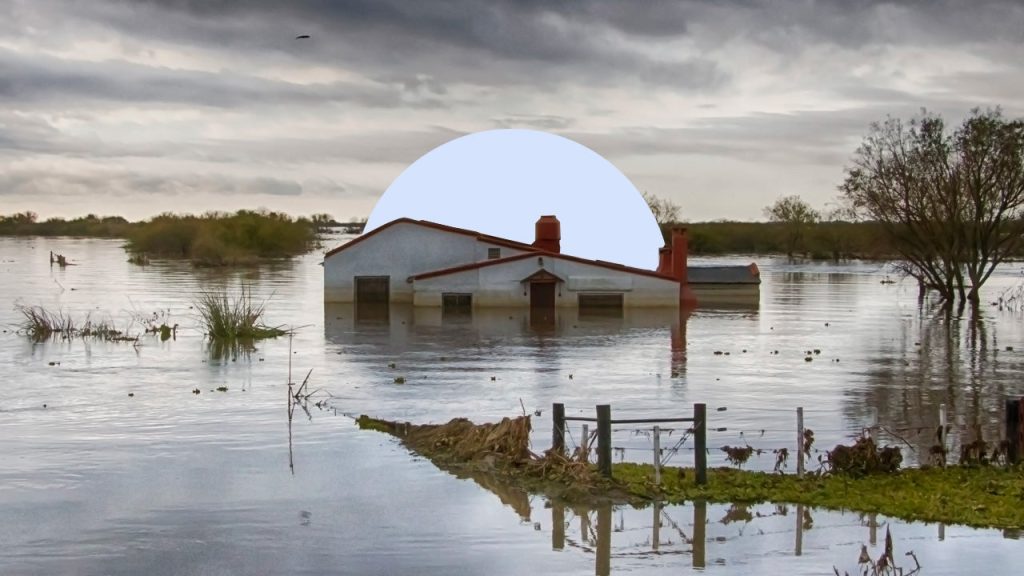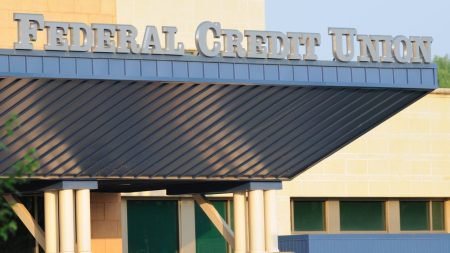In an election year defined by conversations about inflation, one expense category is making an ever-larger dent in Americans’ bank accounts: the cost of severe weather.
According to Bankrate’s 2024 Extreme Weather Survey, 1 in 4 (26 percent) U.S. homeowners say they are unprepared for the potential costs associated with extreme weather events in their area. Midway through the 2024 Atlantic hurricane season, storms like Hurricane Beryl have already cost U.S. homeowners — and their insurance companies — billions of dollars in damage.
If businesses engage in price gouging, driving up prices in the face of storm-generated scarcity, the cost of severe weather could begin before the weather even shifts.
Do weatherproofing materials get pricier before major storms?
When hurricanes and severe winter storms approach, fears of price gouging rear their heads. As Hurricane Helene neared the Atlantic coast last month, attorneys general in North Carolina, South Carolina and Virginia announced that state price gouging laws were in effect. In Georgia, Governor Brian Kemp declared a state of emergency and warned residents against both price gouging and storm fraud.
Price gouging laws — which exist in 37 states — place penalties on businesses that charge “exorbitant” or “excessive” prices for necessary goods during emergencies. In the case of hurricanes like Helene, price gouging could look like doubling the price of fuel for cars and home generators or tripling the cost of tarps, plywood, tie downs and other weatherproofing essentials.
While the exact definition of price gouging varies from state to state, a price increase of 10 percent or more typically pushes into price gouging territory. Residents of states with price gouging laws in effect are encouraged to contact their state attorney general to report the business in question.
But economists and engineers suggest that price gouging in the lead-up and aftermath to major weather events may not be the rampant problem that headlines and government press releases suggest.
Demand surge and the price-gouging “myth”
Dr. Debra Wilson of the University of Canterbury calls hurricane price gouging a “commonly held myth.” Other scholars actually argue that disaster-related price gouging is a good thing: after all, high prices would discourage hoarding, prevent shortages and even encourage out-of-state businesses to funnel goods into disaster-stricken areas.
Still, hurricanes and other major storms can cause increased costs — it just looks a little different. Anna H. Olsen and Keith A. Porter of the University of Colorado Boulder have done extensive research on the phenomenon of “demand surge“: the increase in the cost to repair or replace damaged property in the wake of a major disaster.
According to Olsen and Porter, repair costs can go up by 20 percent or more in the wake of a natural disaster. But they note that it’s not price gouging by hardware stores or big box retailers that’s primarily driving this trend. Instead, Olsen and Porter’s analysis of repair costs in 52 cities along the Atlantic and Gulf Coasts found that labor costs — not the price of materials — is the biggest driver of hurricane demand surge.
In other words: If your state has price gouging laws, they’re likely working pretty well (though you should still report any suspected price gouging to the attorney general!). But protection from high prices doesn’t guarantee that your Home Depot won’t run out of tarps, or that the contractors helping to repair your home along with every other home on your block won’t charge higher prices in the wake of a storm. That’s why smart shopping — before disasters hit — is such an important step in storm preparedness.
When to shop to avoid price gouging during natural disasters
The best time to shop for weatherproofing materials and other hurricane essentials is before the season even starts. If you live in an area that’s subject to hurricanes, it’s a good idea to stock up on essentials like tarps, sandbags and tools between December and May each year — before hurricane season has a chance to disrupt supply chains and trigger demand surge.
The same applies if you live in an area with other seasonal natural disasters, such as severe winter storms or wildfires. The sooner you shop before the onset of the season, the less you’ll need to worry about the price and availability of the supplies you need.
But not all natural disasters give you forewarning — and if you live in an area that’s subject to hurricanes, the season is already underway. With that in mind, simply stick to a basic rule of thumb: the sooner you shop, the safer you’re likely to be from price gouging.
Avoiding contractor fraud after a natural disaster
Price gouging is just one unfair business practice consumers need to watch out for after a major storm or other natural disaster. Contractor fraud — scams where contractors may request payment upfront for work they never complete or charge extra for unnecessary repairs — is another.
“Contractors are essential to helping rebuild and repair homes or property, especially following a disaster,” says Tasha Carter, Insurance Consumer Advocate in the Florida Department of Financial Services. “As with any industry, there are bad actors who attempt to take advantage of consumers by creating damage or inflating costs. To avoid being a victim of fraud, I suggest that consumers vet contractors by ensuring they are licensed, verify required insurance, obtain multiple estimates and review all documents thoroughly before signing.”
Will my homeowners insurance pay for weatherproofing materials?
Your home insurance policy is designed to cover the cost to repair, replace or rebuild your home and its contents if they’re damaged — but it won’t pay ahead of time to weatherproof or fortify your home. In other words, when it comes to buying weatherproofing supplies, you’ll need to purchase any materials out of pocket.
However, while your home insurance company won’t pay outright to weatherproof your home, you might be able to earn a discount or other incentives in exchange for installing certain upgrades. The FORTIFIED construction and re-roofing program run by the Insurance Institute for Business and Home Safety (IBHS) maintains a list of home upgrade incentives available in certain states, including insurance discounts and tax credits. For instance:
- Insurers in Maryland typically offer discounts to policyholders who install hurricane shutters, updated exterior doors and certain roof upgrades that mitigate loss from severe storms.
- The state of Louisiana offers tax deductions up to $5,000 for homeowners who retrofit an existing home to meet state building codes.
- Rhode Island law provides an option for homeowners to complete certain damage mitigation upgrades in exchange for a hurricane deductible waiver.
Do I need to weatherproof my home?
With climate disasters becoming increasingly common, it’s important for all homeowners to understand the climate risks to their property and to take measures to fortify against them. Doing so could reduce your home’s risk of damage and even help to lower the cost of your home insurance.
Since 1980, every single U.S. state has seen at least one billion-dollar disaster, with some states like Texas, Georgia and Illinois experiencing over 100 in the past 44 years. And according to experts in the insurance industry, extreme weather events are only becoming more common and more costly.
But according to Bankrate, just 9 percent of U.S. homeowners invested in weatherproofing strategies in the past five years, and 43 percent say they have not done anything in the past five years to protect against property damage due to extreme weather events.
Weatherproofing requires an investment of time and money, but even small steps can improve your home’s ability to withstand a natural disaster — and protect your wallet from the impacts of post-disaster price surges. Consider the following supplies and steps you could invest in before or during storm season to enhance your property’s defenses.
| Natural disaster type | Supplies to buy | How to prepare |
|---|---|---|
| Hurricanes/tropical storms | Hurricane shutters or plywood Tarps Duct tape Heavy-duty garbage bags |
Store or anchor any loose objects in your yard, including patio furniture and grills Close all windows and doors, including garage doors Install hurricane shutters Clear gutters and downspouts |
| Winter storms | Snow removal equipment such as shovels or snowblowers De-icing products Fuel for home generator |
Let all your faucets drip to prevent pipes freezing Set thermostat to at least 55 degrees (F) Ensure generator is functioning properly |
| Earthquakes/landslides | Furniture anchors Cabinet latches Heavy-duty garbage bags |
Secure any items that could be damaged by shaking, such as televisions or ceiling fans Anchor heavy furniture Clear a path to at least two exits Latch cabinets and drawers to prevent contents spilling out |
| Tornadoes | Furniture anchors Heavy-duty garbage bags Cabinet latches |
Secure any loose objects in your yard, including patio furniture Close all windows and doors, including garage doors Establish a shelter on the lowest floor of your home |
| Heatwaves | Weather stripping for doors and windows Window reflectors Curtains or shades Air conditioners |
Seal doors and windows Install air conditioners Cover windows or use window reflectors |
| Wildfires | Fire extinguishers and hoses Air purifiers Metal wire mesh |
Clean out gutters Cover vents and decks with wire mesh Remove combustible materials within five feet of your home Clear brush and leaves from your yard |
Homeowner responsibility: preventing further damage
Your home insurance policy likely includes a section detailing your “duties after loss” — that is, steps you agree to take after your home is damaged, such as reporting damage promptly to your insurance company.
One duty that insured policyholders have after a loss is to prevent further damage to the property. For instance, if a hurricane damages your roof and leaves a gaping hole, it’s your duty to cover that hole with plastic sheeting or other materials to prevent water from getting into your attic and causing additional damage.
Fortunately, if you do file a claim for the original damage, your policy will usually cover the costs you incur to prevent additional damage. In our example above, this would include the cost of the plastic sheeting.
When should I start preparing my home for a natural disaster?
The best natural disaster preparation starts long before disaster strikes. Preventative maintenance, according to the experts at the Insurance Institute for Business and Home Safety (IBHS), is key.
“Preparing ahead of severe weather is essential,” says IBHS Research Project Scientist Jake Sorber. “Understanding your risk and what elements of your property are vulnerable is the first step in preparing for the next natural disaster. Practicing preventative maintenance is key to maintaining a property’s resilience, and becoming educated on how building materials – such as asphalt shingles and siding – perform against severe weather will allow you to make informed decisions to reduce your home’s risk over time.”
If you’re trying to reduce your home’s risks, here are a few steps you can take:
- Understand your area’s risk factors: You may already be acutely aware of the natural disasters that threaten your area — but using a tool like ClimateCheck can help you evaluate which types of disasters your home most needs protection from.
- Perform annual preventative maintenance before storms hit: Use the off season — winter and spring for hurricanes and wildfires, or summer and fall for winter storms — to inspect your home and conduct maintenance. IBHS maintains guides for pre-disaster maintenance for hurricanes, wildfires, severe thunderstorms and winter storms.
- Consider some major upgrades: In addition to seasonal maintenance like roof repair or chimney cleaning, you may want to invest in significant upgrades — such as a wind-rated garage door or a FORTIFIED roof — to increase your home’s defenses against severe weather.
- Review your insurance policy each year: Along with preventative home maintenance, take time to do insurance maintenance by reviewing your policy, creating a home inventory and storing your policy and agent contact information in an accessible area. You may also want to take the opportunity to shop for cheaper home insurance.
Read the full article here










